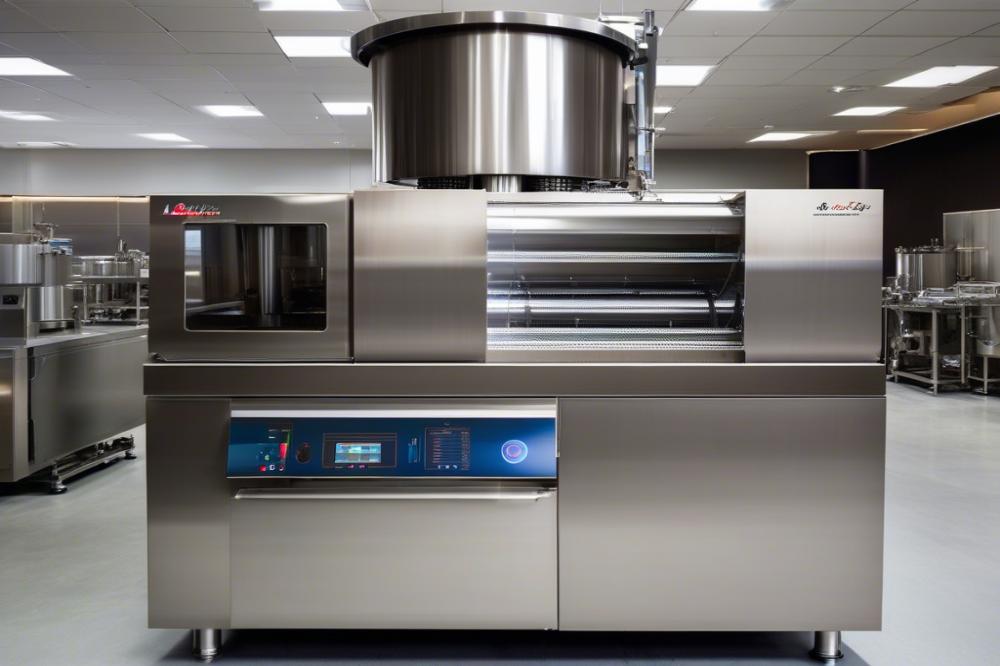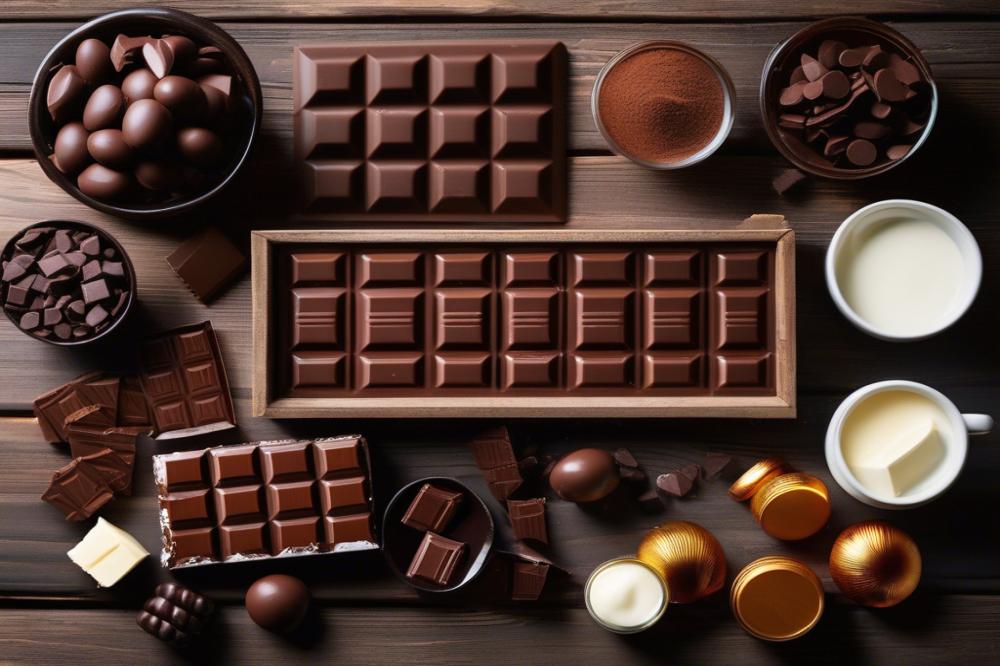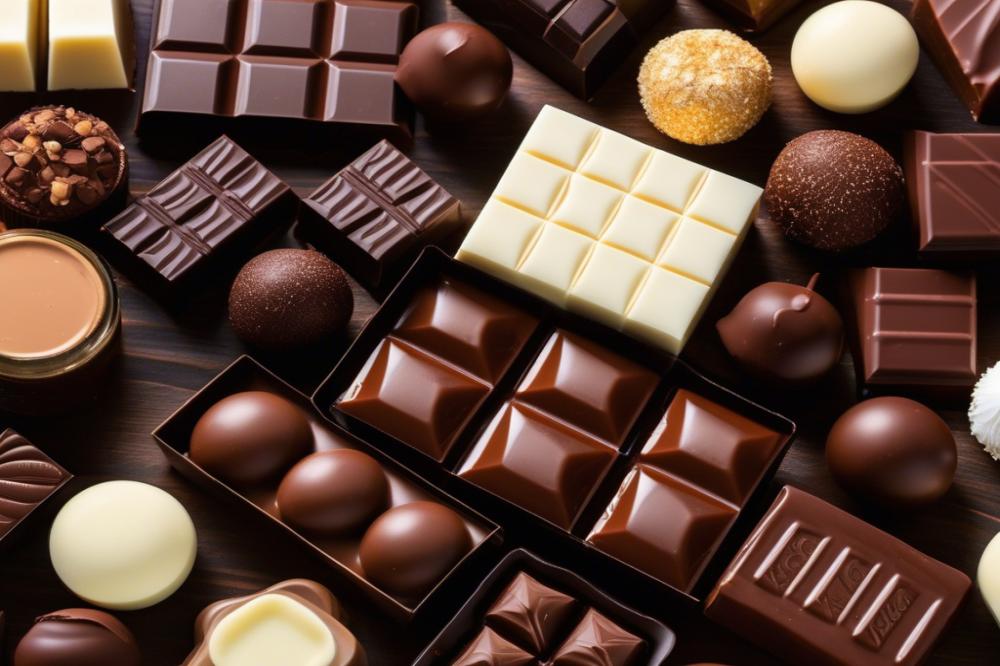Advancements in chocolate tempering Technology
Chocolate holds a prominent place in the hearts and tastes of many. In the chocolate production world, one of the essential processes is tempering. This technique involves heating and cooling chocolate to stabilize its structure. crystallization plays a huge role here. Proper tempering creates that desired glossy finish and firm snap that chocolate lovers appreciate. Without this careful process, chocolate can become unappealing with a dull appearance and a grainy texture.
The significance of tempering extends beyond aesthetics. It directly impacts chocolate texture, affecting how it feels when melted in the mouth. A well-tempered product maintains quality during storage and use, an aspect vital in industrial chocolate. When companies invest in quality control, these little details matter. Poorly tempered chocolate can lead to unappealing surfaces and undesirable flavors.
Technological advancements have led to innovative equipment that simplifies the tempering process. Automatic tempering machines have emerged, reducing manual labor and improving consistency. These machines provide precise temperature regulation, ensuring optimal results every time. Different tempering methods are employed, allowing for flexibility in production. As trends continue evolving, more chocolate makers are embracing these new technologies. This shift not only improves quality but also increases production efficiency.
Emerging trends in chocolate tempering technology focus on enhancing the overall chocolate experience. New techniques allow for a more sustainable approach to production. They also help chocolate makers experiment with new flavors and textures. Investing in modern tempering methods is crucial for staying competitive in a fast-moving industry. The future promises exciting developments that can change how we enjoy this beloved treat.
Understanding Chocolate Tempering

Chocolate tempering refers to the process of heating and cooling chocolate to stabilize its structure. The main goal is to create a smooth and glossy product that snaps perfectly when broken. This technique plays a crucial role in chocolate production, affecting both the aesthetics and the texture of the final product.
A pivotal aspect of chocolate tempering lies in crystallization. Crystals form in different shapes and sizes, affecting how chocolate looks and feels. Proper crystallization leads to the desired crispness and shiny finish that consumers appreciate. Without careful control, the chocolate may develop a dull appearance or a grainy texture, ruining the experience for the eater.
Overview of Traditional Tempering Methods
Traditionally, several methods have been employed to achieve the perfect tempered chocolate. One popular technique is the seeding method, where small pieces of already tempered chocolate are added to melted chocolate. The cooler chocolate encourages the formation of stable crystals. Another common approach is tabling, where melted chocolate is poured onto a cool surface and worked by hand until the right temperature is reached. These methods require skill and attention to detail, especially to maintain adequate temperature regulation throughout the process.
As chocolate production expanded, the need for efficiency in manufacturing became apparent. This is where innovative equipment and automatic tempering machines entered the scene. Such machines simplify the process significantly. They offer precise control over temperature and timing, which helps to deliver consistent quality control. These advancements have transformed industrial chocolate creation, making it easier to produce large quantities without sacrificing quality.
Consistency plays a vital role in maintaining chocolate texture, especially in products like chocolate coating. Ensuring a uniform quality across batches often proves challenging. These new technologies lessen the burden on chocolatiers, allowing even large-scale producers to craft delectable treats with the same care as artisanal makers.
Advancements in tempering technology

Introduction to Automatic Tempering Machines
The rise of automatic tempering machines has changed the landscape of chocolate production. These machines simplify the tempering process, allowing for consistent results. Different brands have developed their own models, each with unique features. Automation saves time and reduces the risk of human error. Operators can focus more on creativity rather than repetitive tasks.
Latest Innovations in Temperature Regulation
Recent advancements in temperature regulation represent a breakthrough in this area. New sensors and control systems provide real-time monitoring of chocolate temperatures. Adjustments can be made immediately to maintain an ideal temperature range. This precise control promotes ideal crystallization, leading to superior chocolate texture. Many machines now come equipped with this technology, enhancing production quality.
Impact of New Equipment on Efficiency and Productivity
Innovative equipment has a profound impact on efficiency in factories. Shorter tempering times allow for faster chocolate coating and production cycles. Businesses can now produce more chocolate with fewer resources. Streamlining processes minimizes waste and maximizes return on investment. Quality control has also improved, as machines produce chocolates that better meet industry standards. Enhanced productivity is crucial in the competitive industrial chocolate market.
Benefits of Modern Tempering Techniques

Modern tempering methods have greatly improved the overall quality of chocolate. Many chocolatiers are now using automatic tempering machines. These machines take the guesswork out of crystallization. A smoother finish and appealing sheen on chocolate coating can make a significant difference in presentation.
The texture of chocolate has also seen notable enhancement. With better temperature regulation during the process, makers can achieve a rich mouthfeel. This consistency is essential for premium products in the industrial chocolate market.
Quality control has transformed in chocolate production. Advanced techniques allow for precise monitoring throughout the process. Chocolatiers can identify flaws earlier, ensuring fewer defective batches leave the factory. By concentrating on quality, brands can build a loyal customer base.
Labor costs can also see significant reductions with the advent of innovative equipment. Workers spend less time on the tempering stage, allowing for increased output. Productivity rises, and profit margins improve. Fewer hands needed means minimal training and fewer errors in temperature management.
Today’s tempering technology not only looks good but performs exceptionally well. Enhanced quality and efficiency help businesses meet consumer demand with ease. The chocolate industry is evolving, and these advancements are at the forefront.
Chocolate Coating and Its Relation to Tempering
In chocolate production, proper tempering is crucial for achieving high-quality coatings. When chocolate is tempered correctly, it becomes glossy and smooth. This quality is not just about appearance; it also impacts the texture. A well-tempered chocolate has a nice snap when bitten, enhancing the overall experience for consumers.
Innovations in coating technologies have transformed industrial chocolate methods. Automatic tempering machines have entered the market, streamlining the process. These machines provide precise temperature regulation, which is essential for proper crystallization. By controlling temperature effectively, manufacturers can create a consistent product that meets customer expectations.
Quality control is a major focus in modern chocolate operations. Chocolate coating can affect shelf life significantly. Properly tempered chocolate resists blooming, where unwanted white streaks appear on the surface over time. This bloom results from sugar or fat crystals rising to the surface, diminishing product appeal.
Advancements in innovative equipment have also contributed to better results in chocolate coating. New systems allow for faster production times while maintaining quality. Automation helps reduce human errors, which can lead to inconsistent texture or taste. As a result, businesses can deliver products that customers appreciate.
The effects of these developments go beyond production efficiency. When consumers bite into a coated treat, their satisfaction levels improve with a better crunch and melt-in-your-mouth experience. In a competitive market, maintaining high standards is vital. Companies that invest in the latest technologies not only gain a competitive edge but also enhance their brand reputation.
Future Trends in Chocolate Tempering
Predictions suggest that in the coming years, chocolate production will undergo significant changes. As the demand for high-quality chocolate grows, manufacturers may require more advanced techniques for processing. Innovations in crystallization methods could lead to better texture and taste in finished products. Many industry experts believe that chocolate coating practices will evolve to incorporate sustainability principles.
Sustainable practices and their impact on tempering methods
With consumers increasingly focused on environmental responsibility, sustainable practices will be at the forefront of chocolate production. New tempering methods that focus on energy efficiency can reduce waste. Companies are likely to adopt equipment that minimizes environmental impact while maintaining high product standards. Optimizing temperature regulation will become crucial in this context, as it directly affects the quality of chocolate. Implementing these methods could enhance the overall experience for consumers, ensuring their cravings are met with guilt-free chocolate choices.
The role of technology in enhancing flavor and quality
Technology continues to play a major role in the chocolate industry. Automatic tempering machines are becoming more common in factories. These devices provide precise control over temperature, making batch consistency a reality. Chocolate producers should also invest in innovative equipment that enhances flavor profiles. Smart sensors are being developed to monitor the entire process, offering insights about quality control. This advanced monitoring will likely lead to improvements in the final product.
With such advancements, the future of chocolate looks promising. As technology shapes the industry, the way we enjoy chocolate might change dramatically. Manufacturers will have to adapt to stay competitive. Enhanced chocolate texture and taste will be a major focus. The future could see artisanal qualities merging with industrial chocolate techniques, offering something for everyone.
Final Thoughts on Advancements in Chocolate Tempering Technology
Recapping the advancements in chocolate tempering technology reveals their vital role in the industry. These innovations have transformed the way chocolatiers achieve the desired texture and shine. The process of crystallization is now more controlled than ever, resulting in better quality products. Customers can enjoy chocolates that not only look appealing but also taste delightful.
Ongoing impacts on the chocolate industry are profound. As manufacturers adopt smarter techniques, they can produce large amounts of high-quality chocolate. Efficiency has improved, reducing waste and enhancing flavor profiles. Consumers are increasingly interested in the details behind how their favorite treats are made. This curiosity drives companies to focus on refining their methods.
Looking ahead, the future holds exciting possibilities for further innovation. Integrating new technologies could lead to even more sustainable practices in chocolate production. As concerns about the environment grow, chocolatiers must adapt. Balancing tradition with modern techniques may help both the industry and our planet. Exploring unique solutions will remain crucial as trends shift.
In conclusion, advancements in this area have made a lasting mark on the chocolate scene. The journey toward better quality and sustainability continues to evolve. Chocolatiers and consumers alike can anticipate a chocolate landscape that is both delicious and responsible.



